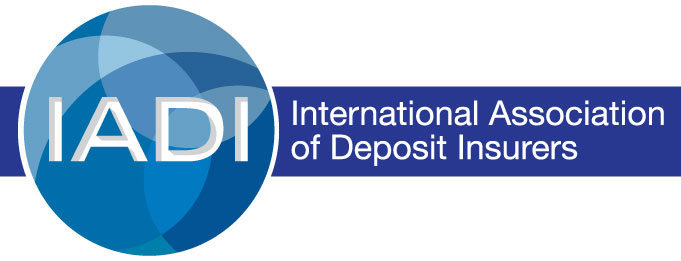Speech by Eva Hüpkes, Secretary General, International Association of Deposit Insurers, at the EBI Global Academic Conference on Banking Regulation “The Banking Union at Ten: European Banking and Capital Markets Law between 2014 and 2024”.
It is a great honour to be invited to this global academic conference marking a decade of the Banking Union. I would like to thank Thomas Gstädtner, President of the Supervisory Board of the European Banking Institute, Volker Wieland, Member of the Academic Board of the EBI; Goethe University, Frankfurt, and Professor Christos Gortsos for inviting me.
Looking at the agenda, today’s conference is not only a reflection on the past, but also a look into the future. So let me take that approach and look back and then look forward.
Ten years ago…
The creation of the Banking Union ten years ago was a response to the global financial crisis. Two of the three pillars of the Banking Union are now in place. Both – the Single Supervisory Mechanism (SSM) and the Single Resolution Mechanism (SRM) – have been instrumental in promoting a more robust and integrated banking supervisory framework in the European Union. However, no stool can be stable if it has only two legs. The third leg must be as strong and firm as the other two. As a representative of the community of deposit insurers, I am naturally interested in the third pillar (or leg) that is still missing, which would be a Single Deposit Guarantee Scheme.
Ten years ago, the Deposit Guarantee Schemes Directive (DGSD) was adopted to ensure that each Member State had at least one deposit insurer that met requirements in line with international standards, including the rapid reimbursement of insured deposits in the event of a default, up to the harmonised level of EUR 100,000.
Alongside the DGSD, the Bank Recovery and Resolution Directive (BRRD) was agreed and implemented in EU Member States by the end of 2014. The BRRD is fully aligned with the international resolution standards set out in the Financial Stability Board’s (FSB) 2011 Key Attributes of Effective Resolution Regimes.
Ten years ago, the FSB also issued a series of resolution principles and proposals to implement the Key Attributes, including its proposals on the total loss-absorbing capacity (TLAC) of G-SIBs in resolution (finalised in 2015), principles on cross-border recognition of resolution measures and temporary restrictions or suspensions of early termination rights, and guidance on cooperation and information sharing with host authorities of jurisdictions not represented in crisis management groups (CMGs) where a global systemically important financial institution (G-SIFI) has a systemic presence.
When push comes to shove, we need to know whether an institution is resolvable under the
resolution regimes and policies in place. That is why the FSB launched the Resolvability
Assessment Process (RAP) in 2014. So far, the RAP has been an annual process and involves an institution-specific assessment of authorities’ preparedness to resolve global systemically important banks. It is essentially a self-assessment by the resolution authorities of the bank’s structure and resolution strategy.
Taken together, these initiatives, including resolution regimes, resolvability assessments and authorities’ advance planning, represent a significant step forward in addressing the lessons of the global financial crisis.
What happened in deposit insurance ten years ago?
Turning now to deposit insurance, it was also ten years ago that IADI first revised its Core
Principles for Effective Deposit Insurance Systems (“Core Principles”), which had been adopted in 2009. This first revision stressed the need for greater integration of deposit insurance into the broader financial safety net and closer coordination between deposit insurers, central banks, resolution authorities and financial regulators. The revision also emphasised the role of deposit insurers in the resolution process of failing banks, the need for adequate capacity and resources, and closer cross-border cooperation between home and host country deposit insurers. The 2014 revision also introduced the “7-day standard” for reimbursements.
Where are we now?
For a decade now, we have had in place, or been working towards, arrangements that would enable authorities to deal with bank failures without exposing taxpayers to the risk of loss.
Since the introduction of resolvability assessments ten years ago, the FSB has reported steady progress. At the national level, several jurisdictions, including the US, the UK and Switzerland, published the state of resolvability. They too noted significant progress over the past decade.
But has the steady progress over the past decade lulled policymakers into complacency? into complacency? Maintaining the momentum in resolution planning and devoting significant resources to strengthening crisis preparedness for darker days is a significant challenge. Over the past year, these regimes have been put to the test. How did our regimes perform?
To the surprise of many, the approach chosen by the Swiss authorities for the resolution of
Credit Suisse (CS) in March 2023 deviated from the resolution strategy prepared by the
authorities in advance: There was no write-down of CS’s total loss-absorbing capacity (TLAC,
“bail-in bonds”). In the case of CS, we did not see any recognition of resolution actions or
suspension of early termination rights, but we noted that some execution risk remained with
respect to the bail-in of instruments traded in a jurisdiction other than the home country. The
Swiss authorities worked closely with the UK and US authorities, which were part of the core crisis group, and we learned that closer communication with authorities in jurisdictions not represented in the core crisis group could have been beneficial, particularly in time zones where financial markets open earlier.
Despite the improvements in resolvability reported by national authorities and in the FSB’s annual resolution reports, the recent episode highlighted gaps in the implementation of international resolution standards. In particular, it highlighted the critical importance of access to liquidity in resolution and of a public liquidity backstop, which was not available in Switzerland and required emergency legislation.
The turmoil in the US banking sector has shown that even non-systemic banks have contagion potential. If a risk is, or is perceived to be, common to similar banks, the collective impact can pose a systemic risk.
It is therefore important to consider the design of deposit insurance schemes and to ensure that resolution tools can be applied to any bank, regardless of size or business model, to allow for an orderly exit from the market. For example, the UK’s approach to the failure of SVB was to transfer it to HSBC rather than to wind it up. All SVB customers retained continued access to their accounts, helping to maintain public confidence.
The UK Government is now proposing the introduction of a new mechanism, to be used alongside existing resolution powers, which would allow the Bank of England to request funds from the deposit insurer, the Financial Services Compensation Scheme (FSCS) (ultimately provided by the industry), to cover certain costs associated with non-payout solutions.
The European Commission’s policy proposal also aims to provide authorities with more options in the use of resolution tools and the use of deposit insurance funds to support non-payout solutions that protect depositors while maintaining business continuity.
These recent proposals raise important questions about the interface between resolution and deposit insurance.
In Europe, in contrast to countries outside Europe, there has been a clear separation between resolution and reliance on TLAC/MREL and resolution funds for resolution funding on the one hand, and bank liquidations supported by deposit insurance payouts on the other. To date, there have been many more bank liquidations of very small banks with payouts to depositors than resolutions. In Europe, the majority of deposit insurers do not have extensive resolution mandates, which may be largely due to this separation, as reflected in the BRRD.
Outside Europe, deposit insurers are more often involved in resolution. According to IADI statistics, 40 per cent of deposit insurers outside Europe are either loss minimisers or risk minimisers, compared to 29 per cent in Europe.
It is therefore important to put the role of European deposit insurers into perspective. For the smaller banks, deposit insurance matters, provided we agree that the objective of a coverage limit is to limit run risk by offering deposit insurance to the vast majority of depositors.
Both at EU level and globally, the level of covered depositors is very high. At the global level, this ratio is 98 % of depositors and has remained consistently high since 2015. In the EU, it ranges from around 75% to 99.8%, with a median of 97%. This is based on a report from the European Banking Authority last year, which is consistent with the IADI data.
The level of coverage in European jurisdictions is just over USD 100,000, well above the global average of USD 67,000, but well below the USD 250,000 level in the US. The share of total deposits fully covered by deposit insurance in Europe is 57% compared to 47% globally. This suggests that the few depositors who are not fully covered hold more than half of the uncovered deposits. This measure in Europe is very similar to that in the US. Over the past decade, we have seen a decline in this coverage ratio in both Europe and the US. It is important to stress that these ratios are based on aggregate statistics of deposits in the respective banking sectors and that the ratios of uninsured deposits at individual banks can vary massively, as we have seen in the case of Signature and Silicon Valley Bank (SVB). SVB had 93.9% of its total domestic deposits uninsured.
Looking ahead
The banking turmoil of 2008-09 has led to widespread reflection at the international level on how to reduce the risk of bank failure and limit the impact of bank failure on financial stability. The objective for this year is to apply the lessons learned from last year’s turmoil.
The FSB will work to further improve bank resolvability, with a focus on public backstop funding, resolution strategies and cross-border recognition of bail-in processes, and speeding
up responses to bank runs.
Working closely with the FSB, IADI will explore the interactions between resolution
frameworks and deposit insurance.
At the heart of our work this year is the review of the IADI Core Principles and accompanying Handbook. This review will take into account the lessons learned from last year’s report on the potential impact of banking turmoil in 2023 and emerging policy issues. It will focus on the design of deposit insurance, its interaction with resolution, the coordination of financial safety nets, and the adaptation of deposit insurance system policies to the evolving economic, technological and regulatory landscape. We will also examine procedures for faster payouts and the use of technology to meet depositors’ expectations. What we have learned is that speed of action matters. The IADI Core Principles expect reimbursement within seven days.
Seven days “feels” very long in a 24/7 world of instant payments. However, it is not clear how relevant speed is to depositor run behaviour and whether quasi-instant access to at least a
portion of insured deposits will help. These and other issues will be examined in the planned review of the Core Principles. We will follow with interest the discussions in the EU, in the UK and elsewhere on the reforms that lie ahead.
Let me conclude with a few wishes for the next decade: We have made very significant progress with the creation of the Banking Union, which started more than a decade ago, but there is unfinished business. Last year, we saw what potential bank runs could look like in a digital world. The episode highlighted the critical need for authorities to have the capacity to respond flexibly and predictably within established frameworks, avoiding the need for extraordinary interventions and ad hoc solutions. Such predictability is crucial for building depositor confidence and mitigating the risk of runs. Returning to the analogy of the threelegged stool, a strong third leg – deposit insurance – that complements and at the same time is an integral part of the crisis management framework is crucial to foster depositor confidence and reduce the incentive to run.

